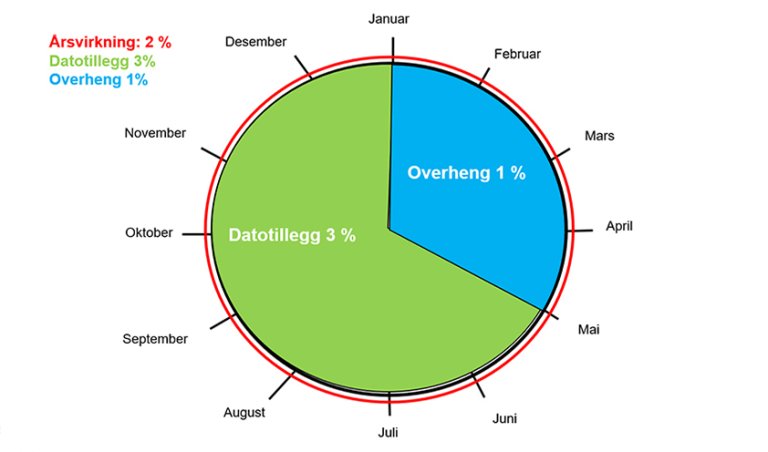Framework, carry-over, wage drift
What do these expressions actually mean?

What do these expressions actually mean?

The salary increase, or the framework as it is called, is the increase in average wages from one calendar year to the next. A framework of 3% means that the total average wage for all employees should be 3% higher than their average wage the previous year.
But: Because this increase is based on a calendar year, while the actual collective bargaining agreement usually takes place in April and takes effect from May, it creates a mess in the accounts. This is what is called a carry-over ('overheng') in collective bargaining language. Because you received a salary increase in May, you enter the new year with a higher salary than the average salary you had for the entire previous year. In other words, you have already received some of the salary increase, or the so-called frame, when you start a new calendar year.
The carry-over is simply the difference between the salary at the start of the new year and the average salary the previous year.

Because the money has already been given, it is not given a second time – and is therefore deducted from the framework.
In addition, we know that some employees will receive various local salary supplements over the course of a year beyond what is determined in the collective agreement. This may be due to seniority promotions, new hires where the person being hired receives a higher salary than the person being replaced, or additional skills that provide a salary supplement.
These are salary increases that come completely independently of the collective bargaining agreements in May. The sum of these salary increases is called wage drift in the collective bargaining language. Since wage drift also contributes to a higher average salary, it is deducted from the big accounting called "the framework".
What remains when both carry-over and wage drift have been deducted from the framework is the actual wage increase according to the collective agreement; the percentage or the amount that ends up on your paycheck after a salary settlement.
Short summary: